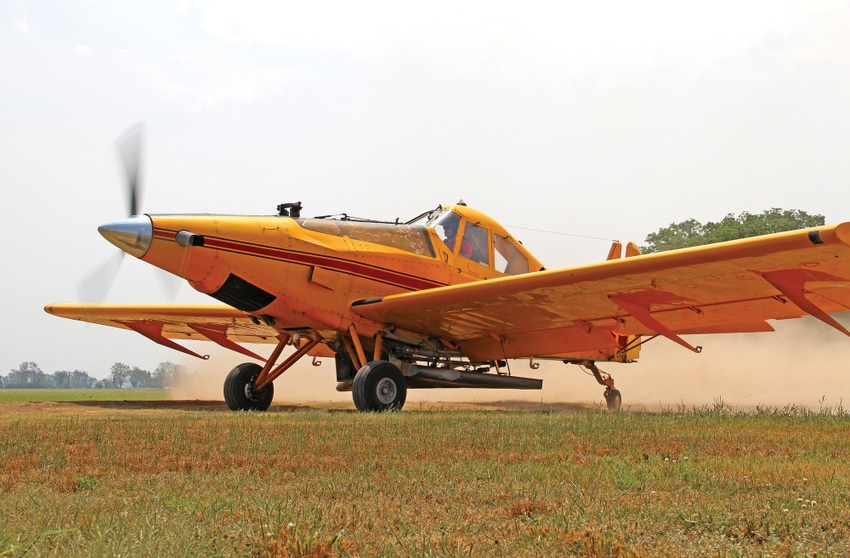
With the increase in some commodity prices, the introduction of new diseases, and old ones getting worse, now more than ever Southern farmers see the benefits of what a well-timed fungicide can do to protect their crops and secure higher yields.
Anyone who grows peanuts knows the need for fungicides, which the crop requires on a consistent schedule seven or eight times a season. But in recent years, Southern farmers have increasingly used fungicides on corn, cotton and soybeans, and it is working for them, says Michael Chafin, farm manager at the Sunbelt Ag Expo.
“We have for the last few years had several trials on using fungicides to protect or even increase yields in corn and to see what well-timed fungicide applications can do to protect corn and cotton against what can be some devastating diseases,” says Chafin, who adds that he’ll be doing work with BASF and Syngenta fungicides on corn trials this year at the Sunbelt Expo Farm site.
“But regardless of the fungicides you use, the end result can be economical for growers in certain situations.”
University of Georgia Cooperative Extension plant pathologist Bob Kemerait will be on hand at the Sunbelt Ag Expo Field Day July 11 in Moultrie, Ga. Field day starts at 7:15 a.m. Along with representatives from leading fungicide-producing companies, Kemerait will talk about how fungicides can work for growers across a Southern farm’s diverse landscape.
Less than a decade ago, UGA Extension specialists had limited recommendations for treating soybeans and field corn with fungicides.
“Today, my message to our corn and soybean producers is that each should anticipate and plan for at least a single fungicide application early in reproductive growth (first tassel, late bloom, early pod set),” Kemerait says.
Where weather is dry or yield potential is low, fungicide applications may not be needed. Where weather is favorable for disease, crop growth is robust and prices are excellent, “growers are wise to follow up with an additional fungicide application,” he says.
Blight has gotten early start
With the cool, wet start to planting this year, Kemerait says, Northern corn leaf blight showed up in early May, the earliest it has ever appeared in Georgia, setting the stage for a well-timed fungicide application in corn. Leaf blight variety trials will be spotlighted at this year’s field day.
And where rust is a problem, he says, a single fungicide application on corn can easily bring an increase in yield of 10 bushels per acre; even more for soybeans. “I think in corn and soybeans, our growers have reached the stage where they are very comfortable using fungicides to make them money,” Kemerait says.
Where growers may not be comfortable using fungicides, though, is in their cotton fields. But that’s changing with the increase in pressure from a disease called cotton target spot caused by Corynespora cassiicola.
“Using fungicides on cotton has kind of come out of left field. But for an increasing number of growers across the Southeast, the use of fungicides to manage target spot is of considerable interest now, but is also approached with uncertainty and a healthy dose of caution,” Kemerait says.
Last year, he says, cotton target spot stretched from Alabama to Virginia, and growers saw advantages to using fungicides in battling it in severe situations, noting that the disease can fast defoliate cotton when it hits early in a season. Fungicides can save up to 200 pounds of lint per acre.
Target spot, he admitted, can help cotton at certain times. A little defoliation late in the season can actually help prevent boll rot in rank-growth cotton, which is most often hit by the disease.
Kemerait is now introducing a risk management tool for cotton target spot to help growers weigh their options on if, when and how to apply fungicide to control it.
Want the latest ag news delivered daily to your inbox? Subscribe to Delta Farm Press Daily.
“Growers should scout their fields at the approach of first bloom to determine if target spot is present. From research conducted in Georgia, the optimum timing for an initial fungicide application is sometime between the first and third week of bloom. An additional fungicide application may be needed approximately three weeks after the first application,” he says.
With increase in fungicide use to protect crops, there is the risk, or a big concern, Kemerait said, for fungicide resistance, something that can and does happen. “Using more fungicides on corn and soybeans can really put some pressure on resistance happening with our triazole- or strobilurine-based products. We don’t want that. … We’ll have to be careful.”
(For additional information about the Sunbelt Expo Field Day and Sunbelt Expo, visit http://sunbeltexpo.com/).
You might also read:
5 major trends pose threat to American farming
Resistant weeds changing the way we farm
About the Author(s)
You May Also Like






